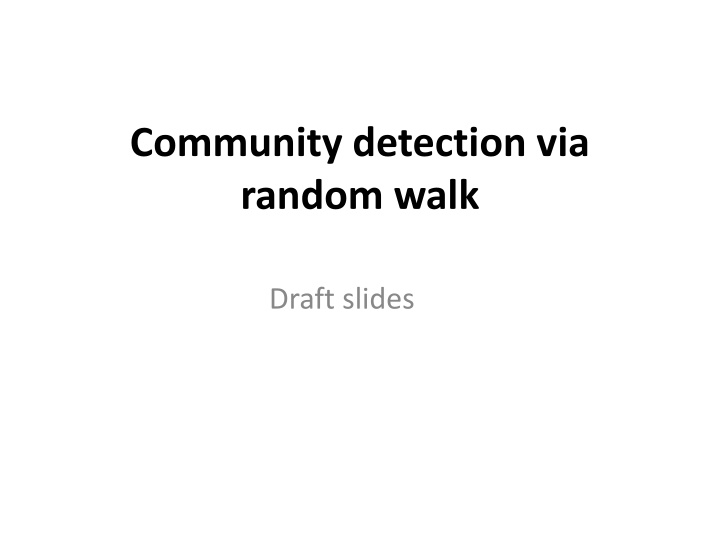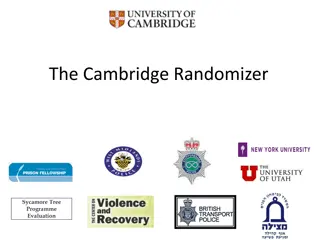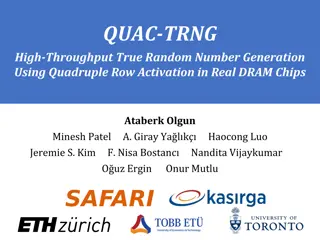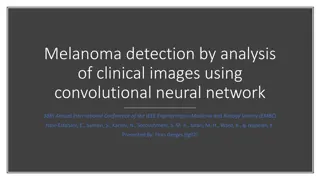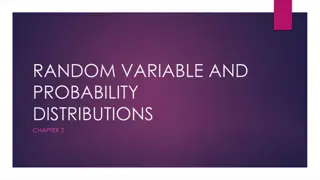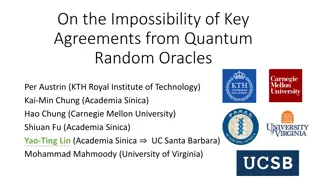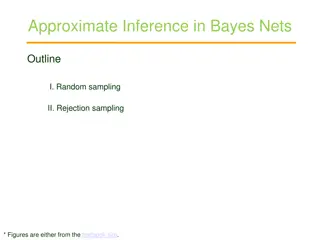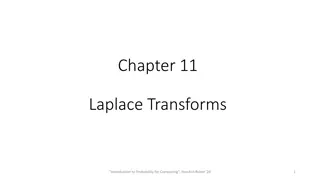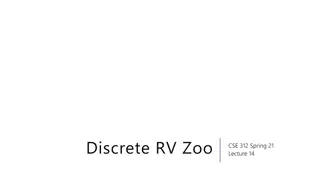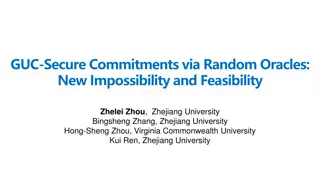Community Detection via Random Walk Algorithms
In this presentation, learn about community detection in social graphs using random walk algorithms like Girvan and Newman's algorithm and Walktrap. Explore how random walks help identify community structures and measure distances between vertices and clusters. Understand the intuition behind Walktrap and how it leverages random walk probabilities to find densely connected communities.
Download Presentation

Please find below an Image/Link to download the presentation.
The content on the website is provided AS IS for your information and personal use only. It may not be sold, licensed, or shared on other websites without obtaining consent from the author.If you encounter any issues during the download, it is possible that the publisher has removed the file from their server.
You are allowed to download the files provided on this website for personal or commercial use, subject to the condition that they are used lawfully. All files are the property of their respective owners.
The content on the website is provided AS IS for your information and personal use only. It may not be sold, licensed, or shared on other websites without obtaining consent from the author.
E N D
Presentation Transcript
Community detection via random walk Draft slides
Background H Consider a social graph G=(V, E), where |V|= n and |E|= m Girvan and Newman s algorithm for community detection runs in O(m2n) time, and O(n2) space. The Walktrapalgorithm by Pons et al. computes a community structure (dendogram) in O(mnH) time, where H is the height of the dendogram more scalable. The worst case is O(m2n) time.
Random walk = probability that a random walk from j reaches a neighbor k, where A is the graph matrix (0-1) The probability of going from i to j through a random walk of length t is Pij t
Random Walk If two vertices are in the same community, the probability then will surely be high. But the fact that is high does not necessarily imply that are in the same community.
Wards agglomerative clustering Well known statistical method that estimates the distance between two clusters C1 and C2 (see Wikipedia). Walktrap uses this idea, but defines its own measure of distance based on random walk and probability.
Random Walk Intuition behind Walktrap Random walkers tend to get trapped into densely connected parts (communities). Establish a distance measure between vertices (and between clusters) based on Pt
Distance between nodes i, j Let be two vertices of the graph. Pons et al. defined distance t Pij where is the probability of reaching j from through a random walk of length t i High degree nodes trap most random walks
Distance between two communities Consider the probability that a random walk from a random vertex in community C to reach a vertex in steps. Call it Then the distance between two communities is
The Algorithm Initially there is one partition In each step, choose two communities (based on the distance between them) and create a new partition Where is the new community Update the distance between them.
Communities to merge This choice plays a central role in the quality of the community detection. At each step k, merge two communities that minimize the mean of the squared distance between them NP-hard for a given k Can be reduced to the K median problem L
